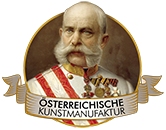Ghost of a Genius(Gespenst eines Genies)Paul Klee |
|
€ 110.16
Enthält 0% MwSt.
Configure art print
|
|
1922 · Wasserfarbe auf Papier
· Picture ID: 24669
Attached to the Adam's apple with a hinge on the rest of the body, sits the oversized head on the doll-like figure. Bright blue lights up the eyes. Hands and feet are tiny by comparison, arms hanging motionless. This body is barely able to act or move. The heavy head tilts under its own load to the side.
During his time at the Bauhaus Paul Klee lived together with his wife and son Felix from 1921 to 1926 in Weimar. In 1923 he made a hand puppet for Felix, with whom he can play puppet theater. Because the head of her yellow fabric body was a power outlet and could be effectively used, when Felix simultaneously operated a light switch on stage, she was called "Electric Haunt". Klee inspired this doll, which appeared like a genie in the puppet show of his son, to the 1922 oil break "ghost of a genius". Known by his students as the "Bauhaus Buddha", Klee finds with the "ghost of a genius" another symbol for the "spirit", which, as a crushing overload, threatens to override man in his physicality and in the whole. Similar to his "Angelus Novus", the "Angel of History", which seems to announce the oncoming horrors of Nazi rule, "Ghost of a Genius" shows how top-heavy theories can paralyze the practical process of action and resistance and block a supposedly unbounded genius. |
|
5/5 · Show reviews (5)
Note: Only reviews with comments are displayed. Reviews can be submitted directly after purchase in your customer account.
|








